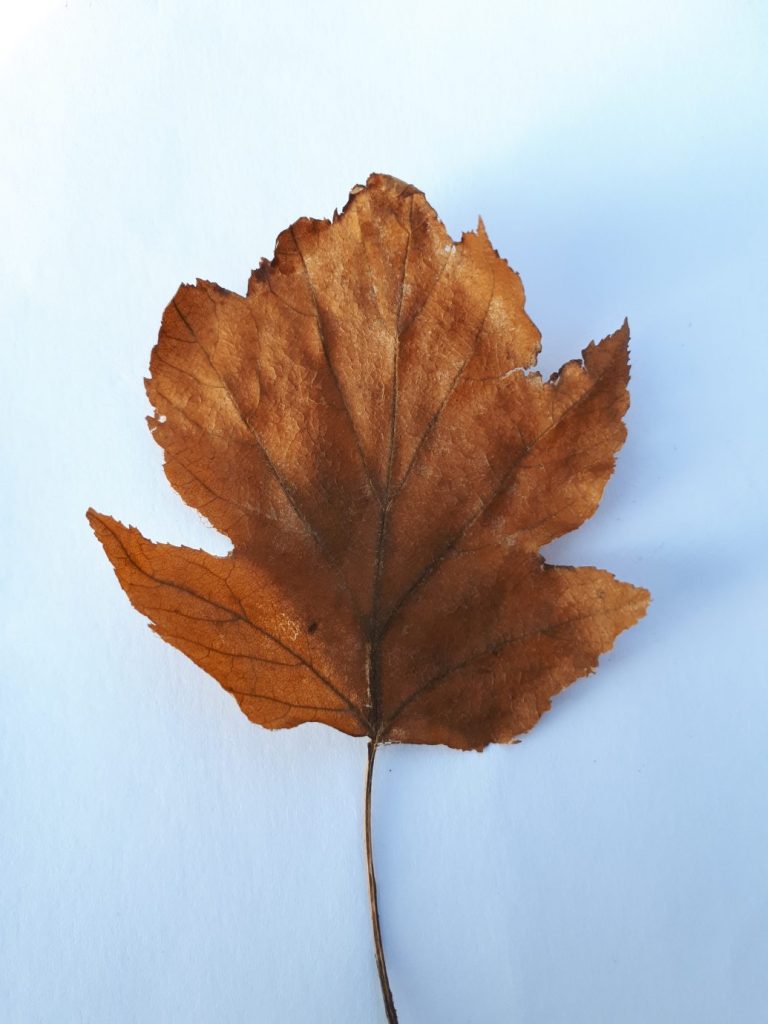For Ed Andrews, news of a rare tree in a wood near Broseley led to a magical encounter.
This story starts with an email from a colleague of mine. In the email was a map centred on Benthall, just outside Broseley. I can see that a lane called The Avenue leads from the main road to Benthall Hall. Beyond the hall, rolling fields drop towards the vast wooded landscape of Benthall Edge. Where the fields end and the woodland begins, my colleague has drawn a red circle on the map. This marks the location of some very special trees.
A few days after studying the map, I park my car and walk along The Avenue. To my left lies marshy pasture haunted by snipe. To my right, a line of huge tin men march across the frost-kissed fields. There is a gentle fizzing sound emanating from the high-voltage power lines they carry.
Stately homes such as Benthall Hall are often approached by an avenue. Historically, the tree-lined route would have helped to create an enhanced sense of arrival. This morning, the stonework of Benthall Hall is illuminated by the low winter sunshine.
Industrial past
Past the hall, the lane becomes a track before emerging at the top of Benthall Edge. My eyes are drawn past the misty cooling towers in the Ironbridge Gorge towards the slopes of the Wrekin. In the early days of the Industrial Revolution, this deep scar in the land must have seemed like hell itself with the glow of furnaces and flames dancing up into the sky. It was the Lord of Benthall who first granted permission for limestone quarrying in these woods in the 13th century. The limestone was used to remove the impurities from the iron stone during the smelting process.
I pass through a narrow cutting into an old quarry. The rocky faces and harts tongue fern give the impression of a hanging garden. Whether it is the dumping of toxic waste, the stashing of dead bodies or the discovery of a huge illegal drugs factory, disused quarries often have grisly stories to tell. This one too bears the scars of abandonment with car tyres and old fence panels lying on the ground.
A rare find
I follow the path along the crest of the gorge. Eventually I arrive at the location marked with the red circle. It is a wooded area on the edge of another old quarry. The trees that I am seeking are a species that I have never seen before so I begin examining each tree for a sign of something unusual. After a few minutes, I spot a number of trees with very textured bark. I look more closely and see three brown leaves that have escaped the winter winds and are still clinging on a branch. They look similar to a maple leaf, but are not as distinctly lobed. I have found the wild service trees.
Wild service trees are by no means the largest trees in these woodlands, but they are probably the rarest. A small population is clustered in this part of Benthall Edge but, across the UK, they are very scarcely found. They are a member of the whitebeam family of trees and favour limestone soils, which explains their presence here. These trees are on the brink of an incredible transformation. On this winter’s day, the sap will be low down in the roots. As we enter early spring so the sap will rise, like a surging tide of growth and renewal. If you have ever pruned a tree branch in spring, you may have seen the sap gushing from the wound.
Tree transport
The rising sap triggers ‘leaf burst’. Today I can see lines of bright green spherical buds along the branches of the service trees. When caressed by the spring sunshine, the buds will open into new leaves. Each leaf is packed with a pigment called chlorophyll which is what makes them look green. The chlorophyll enables leaves to harvest energy from sunlight and make sugars to give the tree energy. The flush of green across the countryside that we associate with spring starts with just a single leaf.
Inside the trunk of a tree are two types of transport fibres, the equivalent of our blood vessels. Phloem transports sugars down from the leaves. Xylem transports water and minerals from the roots. As well as absorbing water from the soil, the roots also anchor the wild service trees among the rocky substrate.
The wild service is an understorey tree which is easily shaded out by bigger trees. The population has reduced as woodland management such as coppicing has declined. Much of the woodland at Benthall Edge was coppiced to produce charcoal to fuel the iron furnaces. It is now under the careful stewardship of Severn Gorge Countryside Trust.
Do one thing for wildlife this month…
It is said that the wild service tree looks most spectacular in spring when it is covered in cream blossom. This month, why not explore Benthall Edge to witness the spectacle for yourself? The Severn Gorge Countryside Trust website has information about waymarked walking route here.
If you feel inspired to help Severn Gorge Countryside Trust care for these woodlands for future generations to enjoy, why not consider leaving a gift in your will? You can find out how to do so on the Severn Gorge website.






